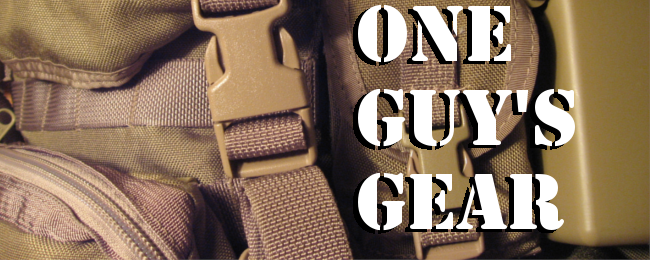Make: Fenix
Model: PD30 R4
The last real flashlight I bought was a Surefire G2 incandescent light, back when these were the hottest things on the market. Surefire got left behind when LED lights hit the scene. They've had some catching up to do and so have I.
I'd read too many good things about Fenix not to give them a try. The hardest decision was really figuring out which model to get as they literally have dozens to choose from. But if you can start by first deciding what kind of battery you prefer to use (AA, AAA, or CR123A), it helps narrow things down quite a bit.
I knew I wanted this light to be small enough to fit into my EDC pack, but I wanted it to be powerful enough to light up a dark street if need be, so I decided to go with the PD30 R4 which uses two CR123A batteries.
How many modes do you need?
The biggest difference between this new Fenix and my old Surefire is that the Fenix has no less than six different light settings. The "Low" 11 lumens setting will run for 65 hours, while the full-on Turbo mode at 265 lumens runs for 1.5 hours. There's a "Medium" and "High" setting between those two. In addition, there's a disorienting Strobe light to thwart attackers, as well as an SOS feature for emergency rescue.
Given that this will be my emergency EDC light, I do like the ability to have different settings available for different situations. There are plenty of times when 11 lumens is more than enough to do what you need to do and there are times when you want to squeeze every bit of brightness out of your light as you possibly can.
I had also specifically been looking for a light with a Strobe feature. I'm pretty convinced that it can be an effective deterrent. It certainly won't stop an assailant cold, but maybe it buys you a few extra seconds to either escape or to make the first move, if that's the way things go down. Of course, the only downside is that it doesn't do much in the daytime...
Fully Loaded
The Fenix feels like a quality piece of gear and it really "comes equipped". It's lightweight, waterproof to 1.5 meters, comes with a removable clip, lanyard, as well as a pretty decent carrying case. The case holds the light snugly with a velcro strap and on the back you have several mounting options. There's a D-ring if you just want to clip it to something with a carabiner or grimloc. There's a standard belt loop, but there's also a hook and loop strap in addition to that which you can use to attach it to MOLLE gear. But since there's nothing holding it secure but an inch of velcro, if you do anything rougher than ride crowded buses, I'd just use a true MOLLE flashlight/mag pouch.Another nice touch is even without the clip attached, the Fenix is designed not to roll easily. It doesn't seem like such a big deal when you read that on the website. Only later do you realize how useful that feature really is.
What's Missing
So I haven't had the light long enough to really put it through its paces, but right off the bat there were a few things I wish were different.
First off, given that the Strobe would most likely be used in a self-defense situation, it's not exactly the easiest mode to engage. Controlling the six different modes on the Fenix is not difficult or complicated by any means, but it can certainly take a few twists and tailcap presses to get to where you want to be. Turning the bezel is what controls whether you're in Turbo/Strobe selection versus Low/Medium/High/SOS selection. To select those options, you "soft press" the tailcap which means you don't press hard enough to make it click (which is what turns the light on and off).
So let's say you keep your light in Turbo/Strobe mode. If you had to quickly engage the Strobe, you would first give the tailcap a full "click" press to turn the light on. The light will default to Turbo mode, so you need to give it a soft press after that to engage the Strobe. It's not difficult to do, but doing it under stress is a different matter.
Note that if you had left your light in the Low/Medium/High/SOS selection mode, you would first need to give the bezel a quick clockwise turn till it stops to switch into Turbo/Strobe.
Again, none of this is difficult to accomplish with enough practice, but I do wish there was a way to have the Strobe be no more than a single hard click away.
The only other big thing missing is a momentary-on switch. Fenix has other models that do have this, though, so one of those may be on a future shopping list.




No comments:
Post a Comment